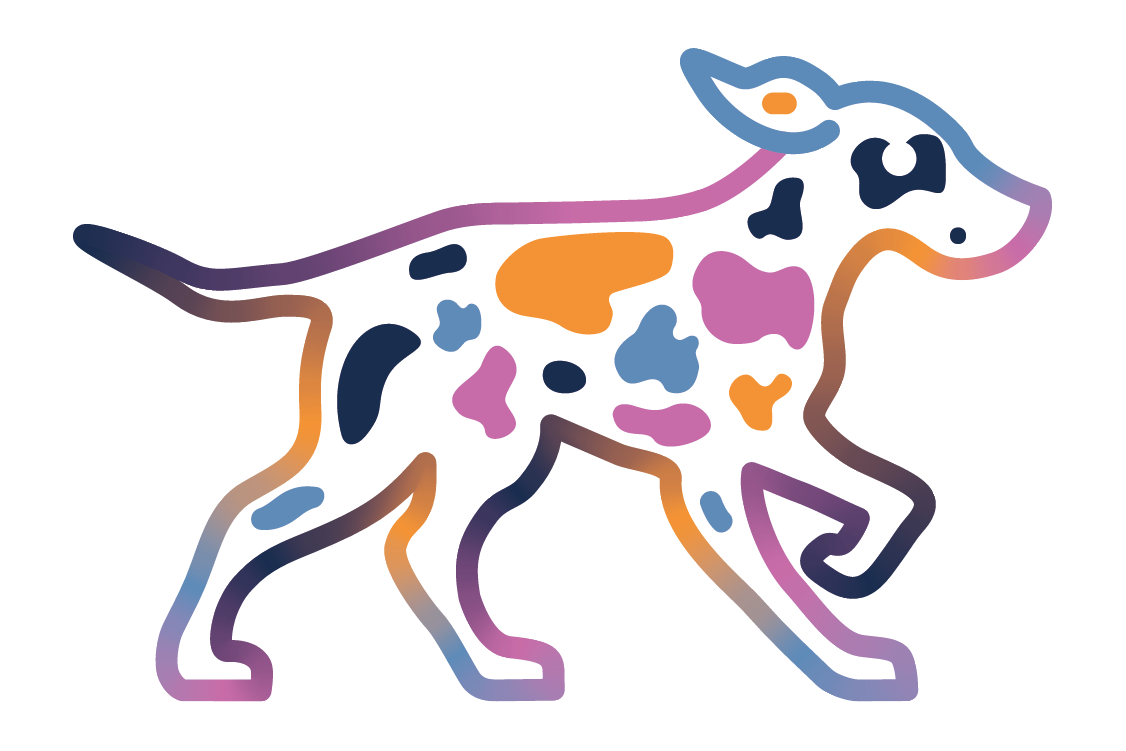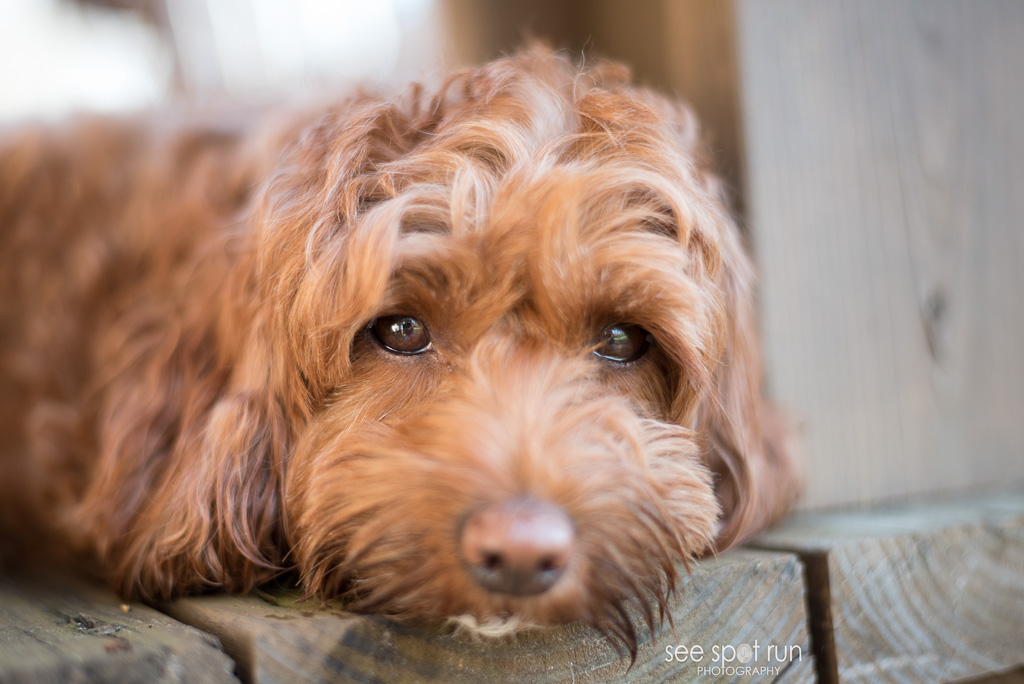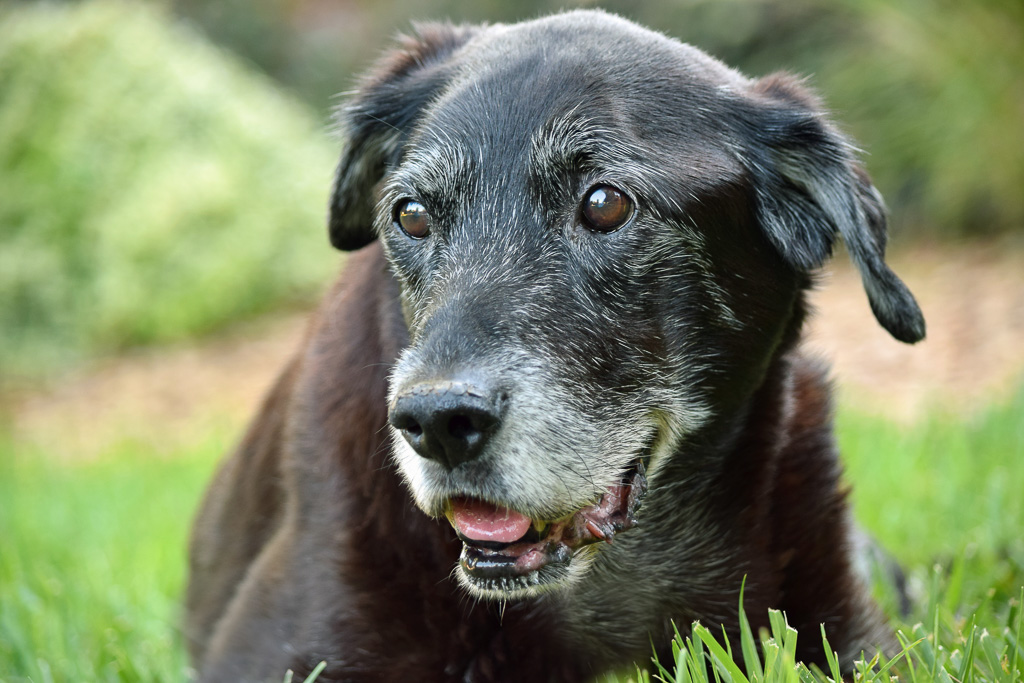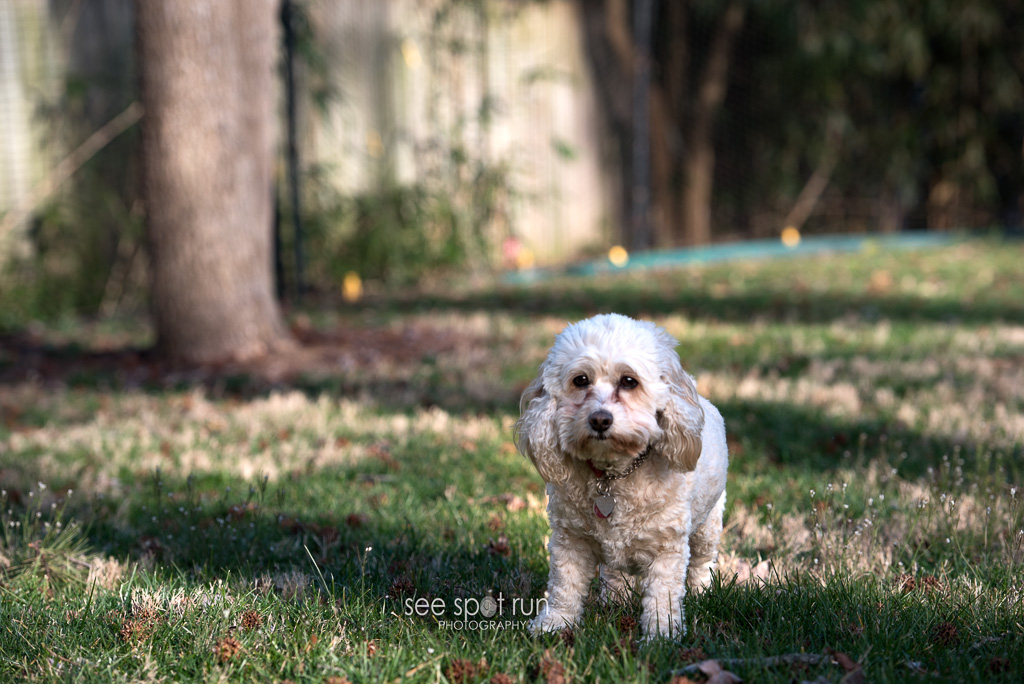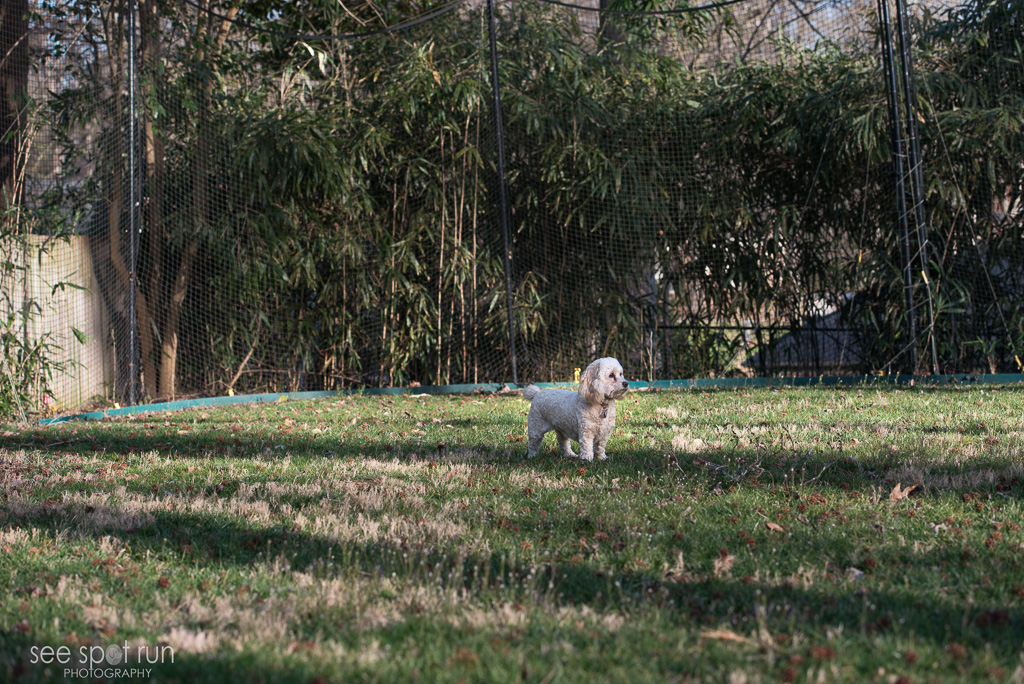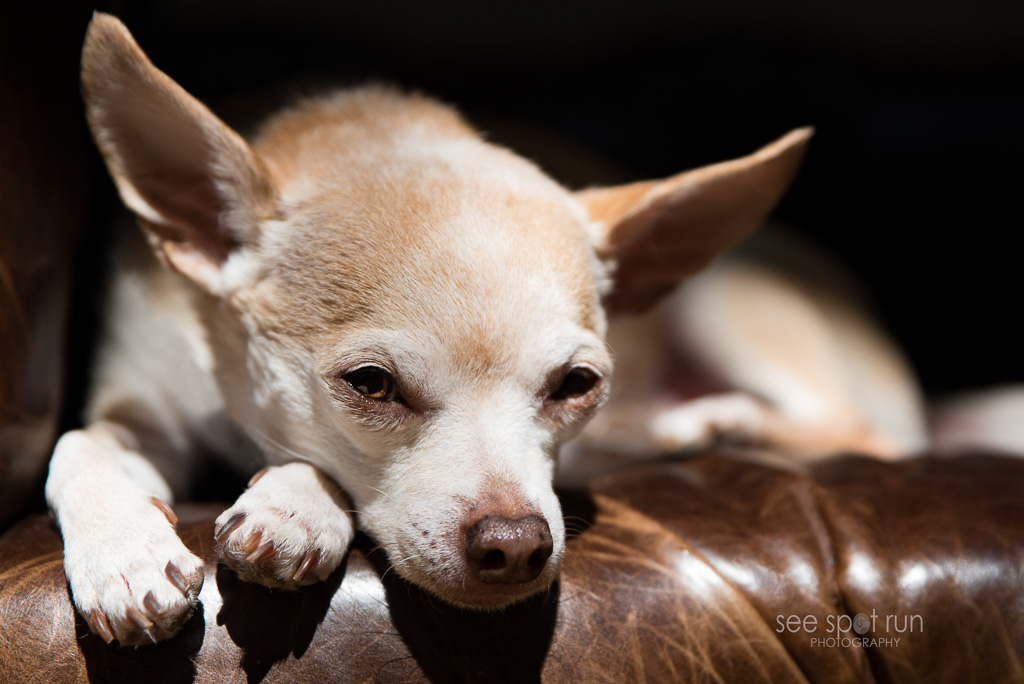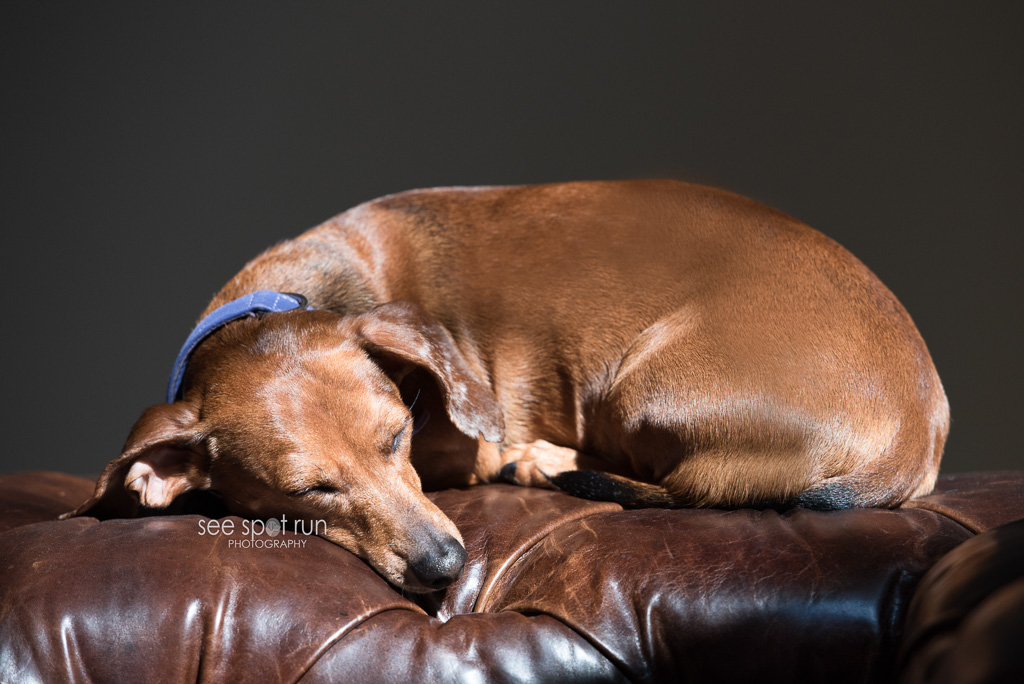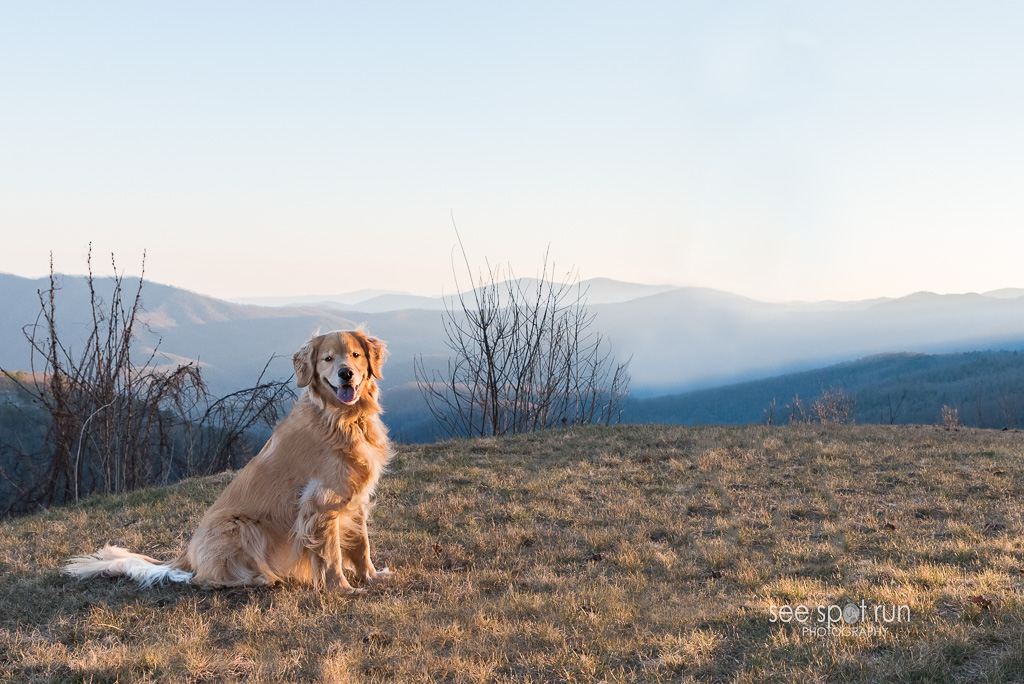In week 12 of the Project 52 challenge, we are working on creating images with a deeper focus. In other words, we want all of the image to be sharp, not just the subject or part of the subject. The assignment said to adjust the aperture to f/10 which I did. I was trying to keep my ISO as low as possible so the photo wouldn't be so noisy (grainy) which meant that my shutter speed was pretty low. And what that means is if anything I'm trying to photograph moves, it won't be sharp. I should've adjusted to f/8. You see, I know this brown dog very well. This is my guy Moose and to get this photo, I had 2 photography assistants helping me. He's a great dog but not the easiest to photograph. His name is Moose and his name fits! He's a bit of a goofball - high energy and food motivated with a pretty strong prey drive. He will 'sit' on command but he's not so good at 'stay.' :(
Here is the (long) back story: Tuesday I'd posted on our facebook page that I was having a problem finding a location to use that had a pretty enough background to keep sharp. Many times I am in an area where I prefer to blur the background because it is cluttered but this week I'm supposed to keep the entire photo sharp. I had envisioned going to a Freedom Park which is really pretty (see below.) There I would have a really pleasing background. However my assistant(s) and I couldn't get our schedules coordinated to make that work.
In trying to come up with plan B, I thought about the blooming bushes in my own front yard. If I could get Moose in front of them, it'd make for a nice photo. So Wednesday morning, I had Moose outside when the neighborhood kids (who are my two best assistants) were waiting for their school bus and I asked them to help me. We had a window of about 15 minutes before the bus would come to try and get a photo that would work.
And this one does, sort of. All of Moose (and there is a lot of him at 90lbs) is in focus, albeit not as sharp as I would like but the bushes behind him aren't. If he wasn't sitting so close to the pink bushes, they'd be more in focus but this is where he finally sat down so I snapped away. Trying to move him forward and getting him to sit again would've been a challenge. With Moose, you take what you can get!
So, in this photo, Gracyn is standing with the leash camera right. Kelly is standing near me with treats in her hand. I'm about 20 yards away from Moose. Caption this photo: What does the look on Moose's face say?
He's a funny dog - he is either crashed on the couch or he is going ninety to nothing. My husband says he's a great dog 90% of the time and by that, I think he means when he is sleeping because the dog loves to sleep!
When he is outside and especially when there are treats around, he's pretty excited. That's why I should've known better than to try and take a photo with these settings. He wasn't very still and I'm disappointed that this image isn't tack sharp. Perhaps camera shake is at fault too. If there is another photo posted of Moose below with deeper focus, you will know I roped the girls into helping me Thursday morning before school too! They're such good sports.
I did get this photo of some Canadian geese earlier in the week. It's at f/8 and has the deeper focus the assignment required and below that are photos of Freedom Park from last fall. Next up in the blog circle is Pet Love Photography, serving Greater Cincinnati and the San Francisco Bay Area. Be sure to keep clicking the links at the bottom of each post to see each photographer's take on the Project 52 assignment - creating photos with a deeper focus.
